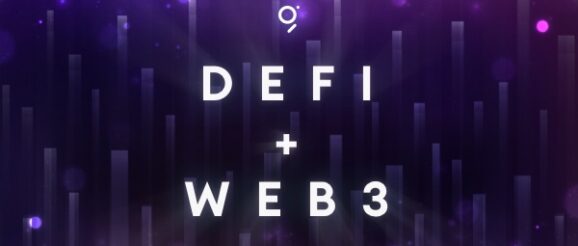DeFi Boom is just the Start of Massive Web3 Innovation

In crypto, 2020 was the year of Decentralized Finance (DeFi for short). The numbers are staggering. Total Value Locked (TVL) exploded from a mere $600 Million in January 2020 to now over $26 Billion. Loans outstanding were up 22x from $150 Million to almost $4.5 Billion. Monthly DEX (Decentralised Exchange) volume is up to $30 Billion. And there are now over 230 DeFi dapps, with innovative new projects announced on a daily basis. The largest projects in the space all boast impressive stats. At the time of writing, the Maker project has issued over $1.5 Billion in DAI (Maker’s stablecoin), Compound currently has $5.8 Billion of assets earning interest across nine markets and Uniswap has processed a life-time volume of $51.7 Billion. It is only a matter of time before we see more institutional investors moving into the Web3 space, much in the same way as we saw institutional Bitcoin adoption.
Over the last year on The Graph’s hosted service, we saw this trend play out first hand. Developers use The Graph to extract data from the blockchain and make it available to Web3 (the decentralized Internet) applications. As we move towards a decentralized web, an “indexing layer” such as The Graph will be a mainstay of the Web3 stack, enabling applications to load quickly and providing a good user experience. In 2020, we saw The Graph’s hosted service usage statistics explode.
The hosted service query volume increased 100x in 2020 from 100 Million queries in the month of January 2020 to over 11 Billion in the month of January 2021 alone. The number of subgraphs (open APIs) on The Graph grew from ~1k Subgraphs in January to over 7k Subgraphs by the end of the year. While Subgraphs do not provide the complete picture of development on Ethereum, they are a very good proxy for Web3 development activity. This momentous growth came primarily from DeFi, NFT art and collectibles and DAOs, showing the wealth of potential for different verticals to get onboard the decentralised web.
Double clicking on DeFi query volumes, it is no surprise that DEXs and AMM strategies, driven by Uniswap, Balancer and Curve, make up the bulk of query volumes in the DeFi vertical, followed by derivatives. The latter is not at all surprising given that in 2021, I expect to see a boom in all manner of DeFi derivative projects from options to futures to synthetic assets.
What else have we learnt? First, an indexing layer such as The Graph is here to stay, as it is now an integral part of the Web3 stack. Writing code for syncing and indexing blockchain data is simply too expensive, time consuming and error prone and we have seen developers recognize this fact en masse.
The larger trend is that we are at an important juncture in blockchain development where tooling and innovation work hand in hand. By analogy when the Internet was in its infancy 25 years ago, there was a lot of work on software and infrastructure that improved the developer experience. For example, the emergence of web service stacks such as LAMP were critical in reducing costs to the point that small development teams could bring products to market. We are at a similar point in blockchain development where higher layers of the stack such as oracles and indexing are coming together to improve the developer experience.
We are at a pivotal juncture in blockchain development on the cusp of a great innovation boom. With the emergence of a blockchain development stack, developers can easily build truly decentralized and serverless applications, something that was not even possible a year ago. The DeFi snowball was the start of the decentralized avalanche.
I think the movement from Web2 to Web3 has well and truly begun. Most of what exists on the Internet today will be decentralized on Web3 and many new innovations will continue to come with this revolutionary technology. We see glimmers of what is to come in 2021. “Arts and collectables” accounted for 14% of all subgraphs and 4% of query volume while “gaming” and “DAOs” are ones to watch at 8% of subraphs each. These are just some of the exciting areas experiencing a major growth spurt.
Finally, while Ethereum is dominant (and will likely remain dominant), we are moving towards a multiblockchain world. We have seen other Layer 1 blockchains recognize the need for an indexing layer and we expect all major Layer 1 blockchains to have such a layer in place before they can be successful. This will be especially important once data is spread across multiple blockchains and storage layers.
Society is only just beginning to realize the importance of decentralization. This year we will see more decentralized websites, services, tools and apps than ever before. We are witnessing the last days of the centralized legacy institutions. The change to decentralization will not happen overnight and DeFi is only the first major decentralized snowball to be thrown. The Graph will play its role in the evolution of the internet and open the gates of Web3 to all developers and entrepreneurs.
